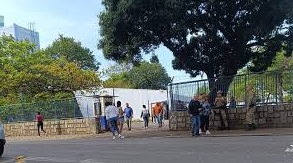From boycotts to creative protests, students navigate the balance between advocacy and institutional limits.
SINGAPORE: While student protests may seem a distant phenomenon for many Singaporeans, activism has deep roots in the nation’s history and continues to find new forms today. Recent events, such as the Students for Palestine collective’s peaceful walk to the Ministry of Home Affairs (MHA), underscore a growing wave of socially conscious student-led advocacy.
Though the group’s actions—posting infographics, organizing poetry readings, and delivering letters—were modest, they ignited polarizing responses. Supporters applauded their solidarity, while detractors raised concerns about setting precedents for unrest.
A Legacy of Activism
Student activism is not new in Singapore. Historical milestones, such as the 1950s University Socialist Club’s resistance to colonial rule, played a critical role in shaping Singapore’s independence. Leaders like Lee Kuan Yew and President Tharman Shanmugaratnam began their political journeys as student activists.
However, the landscape shifted in the 1970s, when stricter regulations curtailed activism, viewing it as a potential threat. Today’s activists operate in a climate where dissent is often met with skepticism or suppression, yet they remain inspired by this legacy.
Education Meets Advocacy
Universities naturally cultivate activism by encouraging critical thinking and civic discourse. Student activists often see their work as an extension of their education, addressing issues like climate justice, financial accessibility, and humanitarian crises.
Groups such as NTU Divest focus on environmental sustainability, while Yale-NUS students have advocated for Palestine. Many campaigns start with grassroots education, aiming to demystify issues and foster empathy among peers.
Adapting to Singapore’s Context
Unlike their counterparts overseas, Singaporean student activists adapt their strategies to local realities. Avoiding confrontational methods, they focus on creative, lawful advocacy. Initiatives include distributing informational flyers, organizing quiet demonstrations, and integrating global issues into relatable local contexts.
This cautious approach reflects both the students’ awareness of institutional boundaries and their commitment to sustainable activism. For example, during their convocation, Yale-NUS students donned Palestinian keffiyehs to signal solidarity while maintaining the safety of participants.
Challenges and Opportunities
Institutional censorship and general apathy remain hurdles. Students often feel restricted by the depoliticization of official campus groups, prompting many to pursue activism independently.
Despite these obstacles, student-led efforts show resilience. Activists emphasize collective action and mutual support to navigate backlash, proving that advocacy is possible within limits.
The Future of Activism
Student activism serves as a critical channel for societal discourse, often challenging institutions beyond traditional feedback loops. While detractors dismiss their efforts as naive, student activists represent a belief in the possibility of meaningful change—an optimism many lose with age.
As these students pave the way for a new generation of conscious citizens, their work offers a blueprint for balancing advocacy with pragmatism in a uniquely Singaporean context.








